 Find and open Excel 97 if it is not already open.
Find and open Excel 97 if it is not already open.
 Make sure your toolbars and formula bar is displayed.
Make sure your toolbars and formula bar is displayed.
 Open a new workbook.
Open a new workbook.
 Save your workbook and name it "expenses".
Save your workbook and name it "expenses".
 Enter the following into your expenses
workbook:
Enter the following into your expenses
workbook:
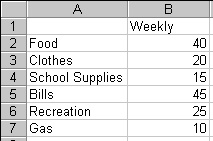
 Select the data you just entered.
Select the data you just entered.
 Choose Chart from the Insert menu.
Choose Chart from the Insert menu.
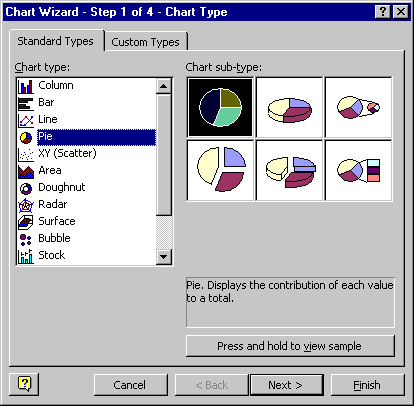
 Select the chart type: Pie and click on the
Next button.
Select the chart type: Pie and click on the
Next button.
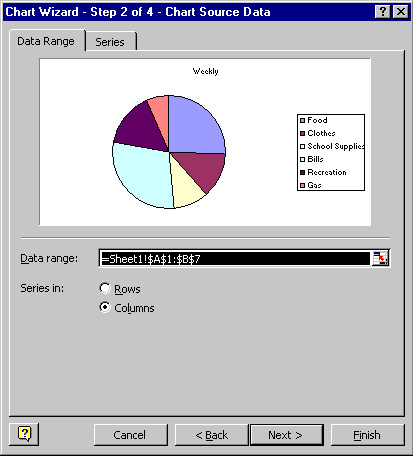
 Read the dialog box, make sure the range is correct
and then click the Next button.
Read the dialog box, make sure the range is correct
and then click the Next button.
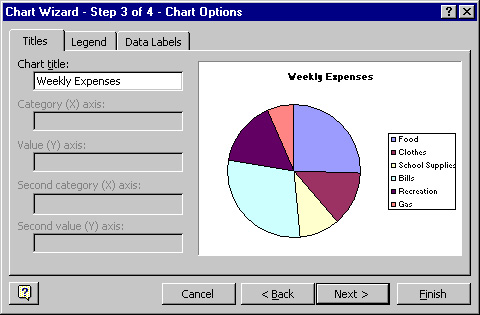
 Select the Titles tab and then
enter "Weekly Expenses" as the chart title.
Select the Titles tab and then
enter "Weekly Expenses" as the chart title.
 Select the Legend tab and make the following adjustments:
Select the Legend tab and make the following adjustments:
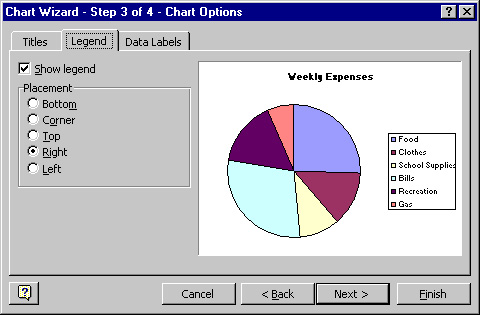
 Select the Data Labels tab and select the following options:
Select the Data Labels tab and select the following options:
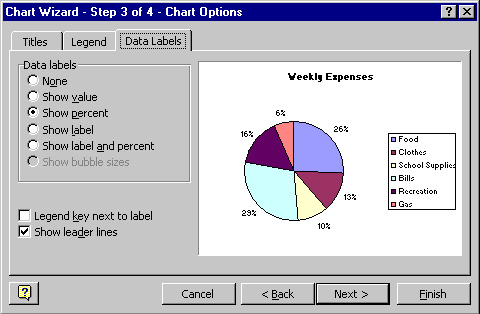
 Select the following options and then click the
Finish button.
Select the following options and then click the
Finish button.
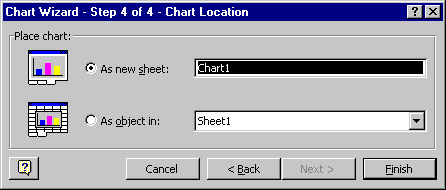
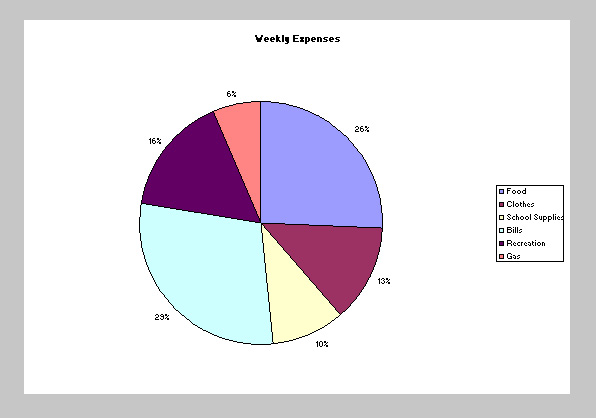
 Save your changes.
Save your changes.
 ), and the chart menu
bar. Note that if the chart toolbar is not displayed,
simply choose Toolbars from the View
menu and check of the chart box.
The chart menu bar is similar to the worksheet menu
bar, except the Insert and Format menus
have some different commands.
), and the chart menu
bar. Note that if the chart toolbar is not displayed,
simply choose Toolbars from the View
menu and check of the chart box.
The chart menu bar is similar to the worksheet menu
bar, except the Insert and Format menus
have some different commands.
| Next Topic: Formatting Charts |
|
|